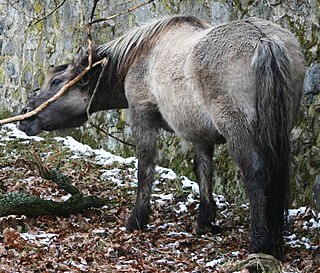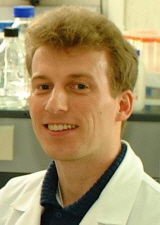Human Origins
Modern humans have existed in Africa for around 200,000 years. Peter Forster discovered on the basis of modern and ancient DNA that there has only been a single successful migration out of Africa during prehistory, and he dated this emigration to around 60,000 years ago. The size of this emigrant group, according to his estimate, was less than 200 people (BBC 2009: African tribe populated rest of the world). Their descendants travelled on average about 200 to 1,000 metres per year and reached Europe and Australia just over 40,000 years ago, and America around 20,000 years ago. Due to the small numbers of founders, and due to their subsequent isolation on separate continents, differences between populations accumulated, yielding the distinctive sets of features that are perceived today as human races. [1] On the basis of geographic DNA patterns, Forster discovered that the current language areas on all continents arose primarily through the prehistoric spread of culturally or militarily dominant men, whose languages were evidently favoured by the local women and passed on to their children. Hence, there is a statistical relationship today between the language and the Y chromosome types of modern males, but no such relationship between mtDNA and language in females today. [2] Peter Forster has also applied his statistical evolutionary approach on languages directly and has calculated that the Celtic languages spread in the Bronze Age from about 3000 BC, and that the Germanic languages spread during the Iron Age from about 600 BC, as far as Britain. [3]
To obtain these results, Forster has compiled, proofread and corrected DNA- and language databases, and developed, in collaboration with his colleagues, phylogenetic network analysis of mitochondrial DNA, Y-chromosomal DNA, and linguistic data, as well as the concept of the mtDNA- and Y-chromosomal "clock". He has developed practical applications of his research in the shape of DNA ancestry tests, geographical ancestry tests and relationship tests for casework in genealogy, family research and forensics.

Andrew Colin Renfrew, Baron Renfrew of Kaimsthorn, was a British archaeologist, paleolinguist and Conservative peer noted for his work on radiocarbon dating, the prehistory of languages, archaeogenetics, neuroarchaeology, and the prevention of looting at archaeological sites.

How and when horses became domesticated has been disputed. Although horses appeared in Paleolithic cave art as early as 30,000 BC, these were wild horses and were probably hunted for meat. The clearest evidence of early use of the horse as a means of transport is from chariot burials dated c. 2000 BC. However, an increasing amount of evidence began to support the hypothesis that horses were domesticated in the Eurasian Steppes in approximately 3500 BC. Discoveries in the context of the Botai culture had suggested that Botai settlements in the Akmola Province of Kazakhstan are the location of the earliest domestication of the horse. Warmuth et al. (2012) pointed to horses having been domesticated around 3000 BC in what is now Ukraine and Western Kazakhstan. The evidence is disputed by archaeozoologist Williams T. Taylor, who argues that domestication did not take place until around 2000 BC.
Archaeogenetics is the study of ancient DNA using various molecular genetic methods and DNA resources. This form of genetic analysis can be applied to human, animal, and plant specimens. Ancient DNA can be extracted from various fossilized specimens including bones, eggshells, and artificially preserved tissues in human and animal specimens. In plants, ancient DNA can be extracted from seeds and tissue. Archaeogenetics provides us with genetic evidence of ancient population group migrations, domestication events, and plant and animal evolution. The ancient DNA cross referenced with the DNA of relative modern genetic populations allows researchers to run comparison studies that provide a more complete analysis when ancient DNA is compromised.

The Elamo-Dravidian language family is a hypothesised language family that links the Elamite language of ancient Elam to the Dravidian languages of South Asia. The latest version (2015) of the hypothesis entails a reclassification of Brahui as being more closely related to Elamite than to the remaining Dravidian languages. Linguist David McAlpin has been a chief proponent of the Elamo-Dravidian hypothesis, followed by Franklin Southworth as the other major supporter. The hypothesis has gained attention in academic circles, but has been subject to serious criticism by linguists, and remains only one of several possible scenarios for the origins of the Dravidian languages. Elamite is generally accepted by scholars to be a language isolate, unrelated to any other known language.

Demic diffusion, as opposed to trans-cultural diffusion, is a demographic term referring to a migratory model, developed by Luigi Luca Cavalli-Sforza, of population diffusion into and across an area that had been previously uninhabited by that group and possibly but not necessarily displacing, replacing, or intermixing with an existing population.
Toomas Kivisild is an Estonian population geneticist. He graduated as a biologist and received his PhD in Genetics, from University of Tartu, Estonia, in 2000. Since then he has worked as a postdoctoral research fellow in the School of Medicine, at Stanford University (2002-3), Estonian Biocentre, as the Professor of Evolutionary Biology, University of Tartu (2005-6), and as a Lecturer and Reader in Human Evolutionary Genetics in the Department of Archaeology and Anthropology at the University of Cambridge (2006-2018). From 2018 he is a professor in the Department of Human Genetics at KU Leuven and a senior researcher at the Institute of Genomics, University of Tartu.

George "Sjors" van Driem is a Dutch professor emeritus of linguistics at the University of Bern. He studied East Asian languages and is known for the father tongue hypothesis.

Haplogroup P also known as P-F5850 or K2b2 is a Y-chromosome DNA haplogroup in human genetics. P-F5850 is a branch of K2b, which is a branch of Haplogroup K2 (K-M526).

In human genetics, a human Y-chromosome DNA haplogroup is a haplogroup defined by specific mutations in the non-recombining portions of DNA on the male-specific Y chromosome (Y-DNA). Individuals within a haplogroup share similar numbers of short tandem repeats (STRs) and single-nucleotide polymorphisms (SNPs). The Y-chromosome accumulates approximately two mutations per generation, and Y-DNA haplogroups represent significant branches of the Y-chromosome phylogenetic tree, each characterized by hundreds or even thousands of unique mutations.
The Anatolian hypothesis, also known as the Anatolian theory or the sedentary farmer theory, first developed by British archaeologist Colin Renfrew in 1987, proposes that the dispersal of Proto-Indo-Europeans originated in Neolithic Anatolia. It is the main competitor to the Kurgan hypothesis, or steppe theory, which enjoys more academic favor.
Steven Mithen, is an archaeologist. He is noted for his work on the evolution of language, music and intelligence, prehistoric hunter-gatherers, and the origins of farming. He is professor of early prehistory at the University of Reading.
Peter Stafford Bellwood is Emeritus Professor of Archaeology in the School of Archaeology and Anthropology at the Australian National University (ANU) in Canberra. He is well known for his Out of Taiwan model regarding the spread of Austronesian languages.

The Proto-Afroasiatic homeland is the hypothetical place where speakers of the Proto-Afroasiatic language lived in a single linguistic community, or complex of communities, before this original language dispersed geographically and divided into separate distinct languages. Afroasiatic languages are today mostly distributed in parts of Western Asia and North Africa.

The peopling of India refers to the migration of Homo sapiens into the Indian subcontinent. Anatomically modern humans settled India in multiple waves of early migrations, over tens of millennia. The first migrants came with the Coastal Migration/Southern Dispersal 65,000 years ago, whereafter complex migrations within South and Southeast Asia took place. West Asian (Iranian) hunter-gatherers migrated to South Asia after the Last Glacial Period but before the onset of farming. Together with ancient South Asian hunter-gatherers they formed the population of the Indus Valley Civilisation (IVC).
Y-DNA haplogroups in populations of South Asia are haplogroups of the male Y-chromosome found in South Asian populations.
Listed here are notable ethnic groups and native populations from the Oceania and East Indonesia by human Y-chromosome DNA haplogroups based on relevant studies.

The father tongue hypothesis proposes the idea that humans tend to speak their father's language. The hypothesis is based on a 1997 proposal that linguistic affiliation correlates more closely with Y-chromosomal variation than with mitochondrial DNA variation. The initial work was performed on African and European samples by a team of population geneticists, led by Laurent Excoffier. On the basis of these, and similar findings by other geneticists, the hypothesis was elaborated by historical linguist George van Driem in 2010 that the teaching by a mother of her spouse's tongue to her children is a mechanism by which language has preferentially been spread over time. Focusing on prehistoric language shift in already settled areas, examples worldwide show that as little as 10–20% of prehistoric male immigration can cause a language switch, indicating an elite imposition such as may have happened with the appearance of the first farmers or metalworkers in the Neolithic, Bronze and Iron Ages.
Haplogroup C-B477, also known as Haplogroup C1b2, is a Y-chromosome haplogroup. It is one of two primary branches of Haplogroup C1b, one of the descendants of Haplogroup C1.
The farming/language dispersal hypothesis proposes that many of the largest language families in the world dispersed along with the expansion of agriculture. This hypothesis was proposed by archaeologists Peter Bellwood and Colin Renfrew. It has been widely debated and archaeologists, linguists, and geneticists often disagree with all or only parts of the hypothesis.










